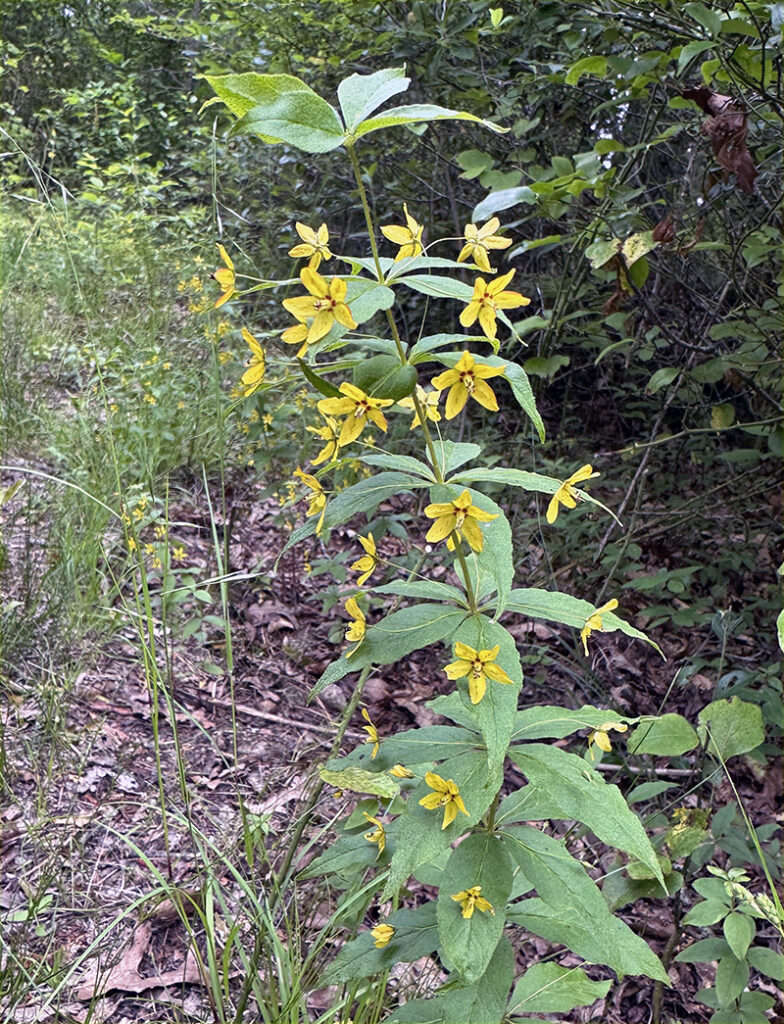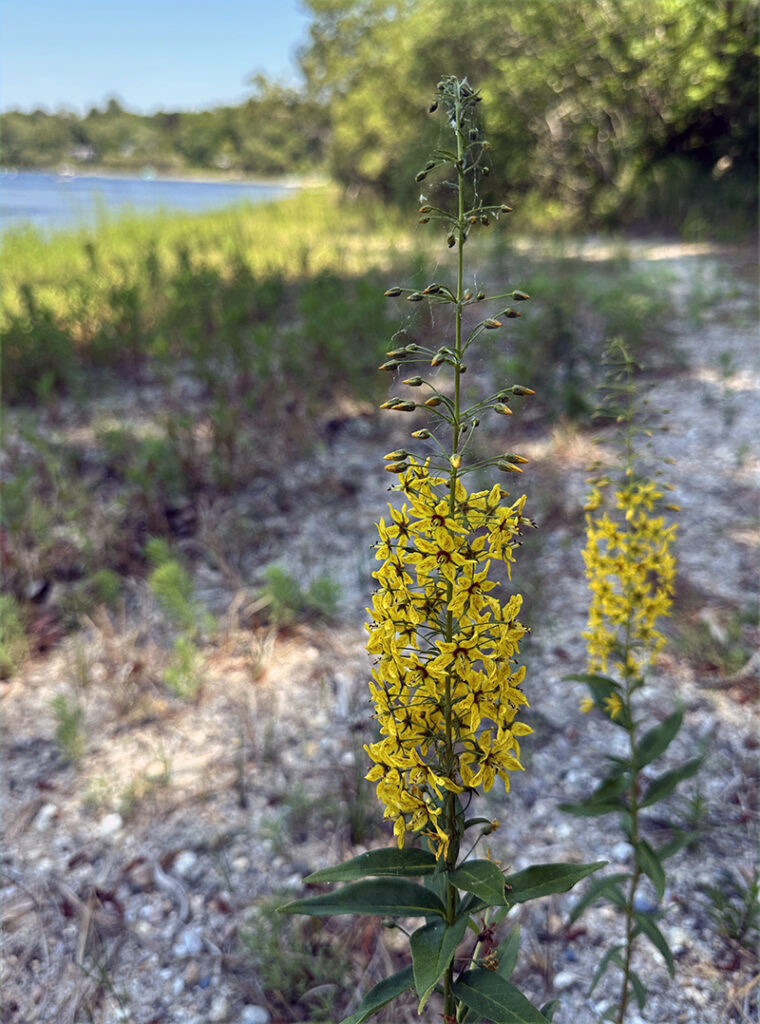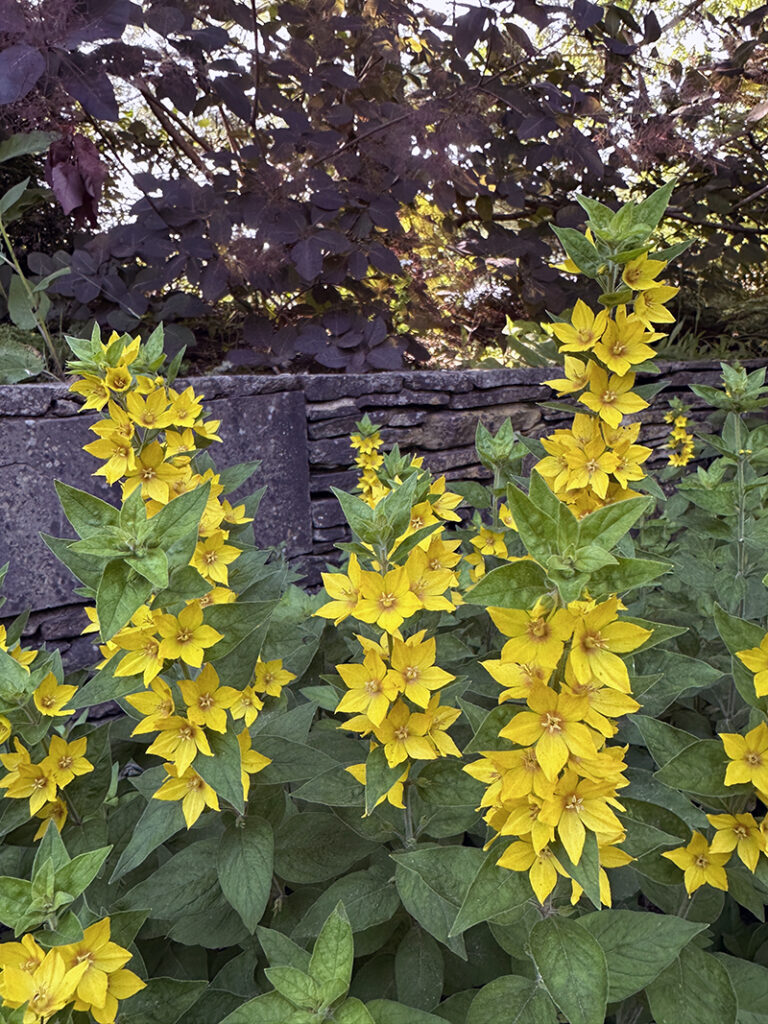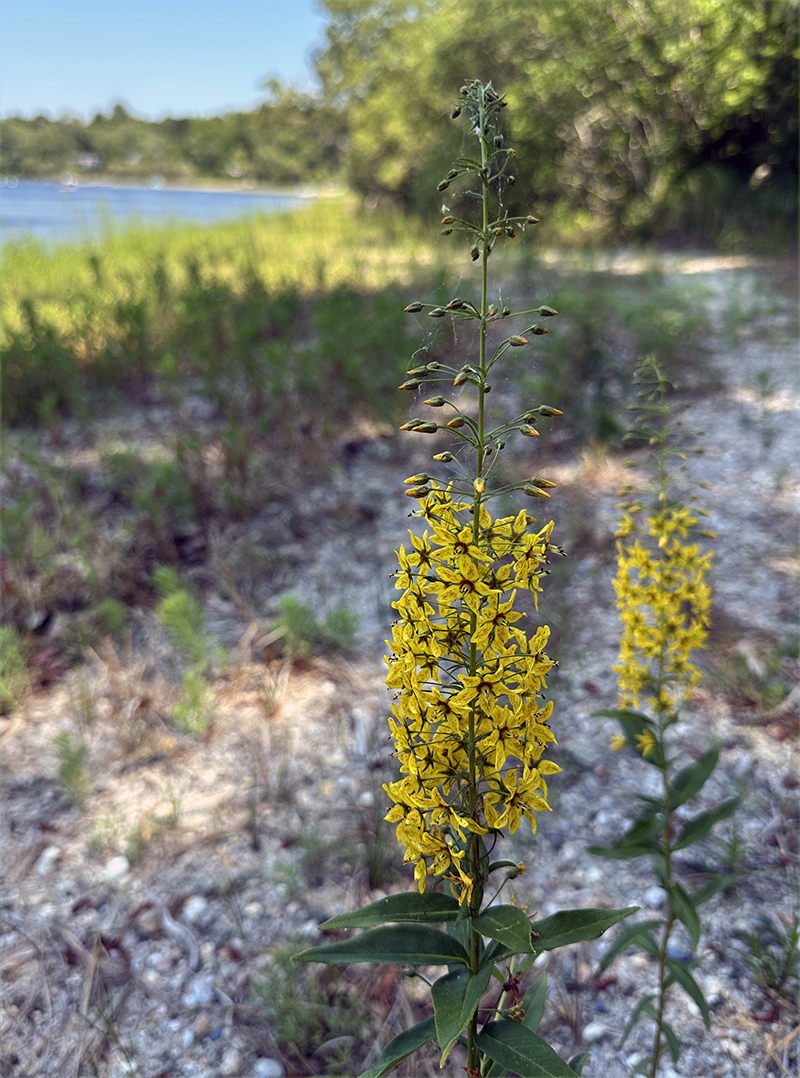One of the pleasures of being involved with plants is getting to know them as a family. We learn about plants that are in the same genus, and how they are similar. It’s like getting to know your best friend’s siblings and cousins, or connecting with your extended in-laws at a family reunion. Once you know one plant, it’s often easy to recognize something that’s related. “Look at this,” you might think when you’re on a walk in the woods. “This looks similar to my…”
When I started walking my dog at a local conservation area a few years ago, I saw a plant along the path that was in flower in June, and resembled the Lysimachia punctata, aka circle flower, that I have growing in my garden. “This is definitely a Lysimachia,” I thought, and sure enough, when I looked it up I learned that it was Lysimachia quadrifolia that was growing in the Boyden Farm Conservation land. As I finished the dog walk this morning, I stopped to take a photo.
Later in the afternoon my husband and I went down to sit on the shore of Lawrence Pond. We watched the wind make patterns on the lake, saw the various birds swoop by overhead, and followed Mr and Mrs Mallard in their journey across the water. Looking at the various shore plants that fill our sandy beach, I noticed a group of showy, yellow spires that I’d not seen before. Getting up to observe them more closely and take a photo, I realized that these too were likely in the genus Lysimachia. They were Lysimachia terrestria, a plant with the delightful common name of swamp candles.
All three of these species of Lysimachia were in full bloom at the same time. All with yellow flowers, and all lovely, yet each with its own look and habit.
Getting to know plants that are related is like meeting someone who also grew up in your old neighborhood, or went to the same college or summer camp that you did. You are connected, new to you yet familiar at the same time.

This Lysimachia quadrifolia is also called whorled loosestrife. It is a plant native to the eastern United States and Canada. This plant attracts specialist bees like the Macropis spp.

On the beach at my house in Sandwich, I appreciated this Lysimachia terrestris, another indigenous wild flower that is important to native bees.

I have grown Lysimachia punctata in my gardens for years. This isn’t native to North America as the other two in this genus that I listed here. It is a “pass-along-perennial” because it spreads well enough so that most people have some to share. Some members of the genus Lysimachia are well know thugs…pass along plants that become pass along problems. Lysimachia nummularia (creeping jenny) and Lysimachia clethroides (gooseneck loosestrife) are probably the best known for being perennials that are commonly found in plant sales that the buyers come to regret placing in their gardens. Although Lysimachia punctata does spread, it isn’t as vigorous as creeping jennyor gooseneck loosestrife, and I’ve always found it easy to pull and control. It is also a lovely cut flower.



0 Comments